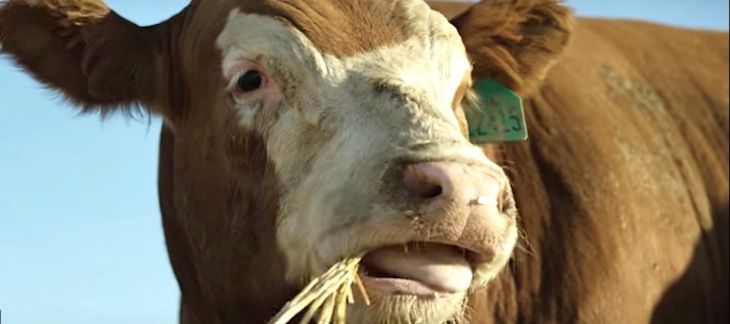Arkansas cattle producers facing ‘disaster’ as record drought conditions worsen
by July 19, 2022 9:58 am 3,546 views

Drought conditions in Arkansas continue to worsen and it’s starting to have an impact on the state’s largest economic sector, agriculture. The impacts to row crops won’t be known for a while, but the cattle industry is in peril.
There are growing reports that cattle farmers are selling off livestock to cut their losses. Farmers in this industry rely on grass fields and hay to supplement costlier feed. The withering conditions are affecting pasture performance statewide.
Kevin Lawson, the University of Arkansas Cooperative Extension’s director for the 25-county Ozark District, said cattle farmers face grim prospects. His district sits in the heart of Arkansas’ cattle producing region.
“We’re on the edge of a disaster,” he said.
Parts of Arkansas haven’t had any measurable rain since late May. The National Agricultural Statistics Service’s weekly crop report indicates that 43% of pastures are in poor or very poor condition.
“We’re holding steady right now,” said Michael Lee, who runs Flying C Ranch, a cow-calf operation in Faulkner County. “The grass is struggling. If it doesn’t rain pretty significantly in the next week or two, there will probably be a lot of cows that will have to be sold here on the farm.”
Herb Ginn, Crawford County extension staff chair for the University of Arkansas System Division of Agriculture, said some hay growers are working on their second cutting, but they are still struggling.
“This is one for the books, though we hadn’t yet broken the high temperature record in Fort Smith,” Ginn said. “The forecast for next week is 101 and 102, so that ought to pretty well finish us off as far as hay is concerned … desperate times call for desperate measures and if things continue as they are, some producers may be forced to sell their cattle. They can’t feed them.”
Zach Gardner, Faulkner County extension agent, said a hayfield being used for an integrated pest management demonstration last year produced 242 round bales in its first cutting. This year, that number is down to 151 bales.
“People are trying to find hay and no one wants to sell hay. Even those who might have carryover from last year, and those who have irrigated hay, are still not selling it,” Gardner said. “There is no hay to buy.”
Gardner said no one in his county has resorted to feeding hay yet.
“They’re aggressively rotating cattle to different fields, but it’s not going to be much longer before we don’t get any rain. In Faulkner County, there’s a lot of cattle going to the sale barn. People are reducing herd sizes,” he said.
Arkansas typically ranks among the top 15 beef cattle producing states. There were nearly 1 million head of beef cattle/cows in the state in 2020, USDA reported. Beef is typically the fifth largest agri sector in Arkansas. It’s a nearly $1 billion industry in the state with about 24,000 farms. Roughly, 5.6 million acres is utilized in the industry, according to the Arkansas Farm Bureau.
James Mitchell, extension livestock economist for the Division of Agriculture, said national cattle slaughter numbers are the highest they’ve been in more than a quarter century.
“From January to June, total beef cow slaughter is at its highest level since 1996,” he said. “If you look at the number of head slaughtered as a percentage of the January 1 inventory, that’s 5.3% of available cows in the U.S. That would be confirmation that we’re seeing people sell off their herd, are culling, or are digging deeper into their herds to cull more cattle.”
The higher numbers of cattle being processed doesn’t necessarily translate into lower prices.
“If we’re slaughtering this many cows in a year, that would suggest a large supply of beef cows and that those prices should be lower,” he said. “If you look at auction prices for slaughter cows, we’ve had a very strong slaughter market. Prices are 5-8% above a year ago at this time.”
Mitchell said the situation is being driven by strong consumer demand.
“One of the biggest stories is that through inflation, customers aren’t substituting away from beef,” he said. “They’re substituting from a higher-end steak to something more affordable — ground beef.”
As for retail prices, there won’t be an immediate effect.
“If you think about that newborn calf, it takes two years to become a steak on your plate,” Mitchell said. “You’ll see higher prices in a year or two with fewer cattle going to slaughter. There’s a bit of a lag between drought and its effect on prices.”
The weather won’t get better in the coming days or weeks but will in fact get worse if projections hold. Temperatures are predicted to soar above 100 degrees each day this week, according to the National Weather Service. No rain is predicted for any part of the state through Monday. Long-term forecast models indicate that the same pattern of no rain and triple digit temperatures could extend another week beyond.
All counties in the northern third of the state are in phase one drought status, according to NWS. Most counties in Northeast Arkansas and a few in extreme Southwest Arkansas are in phase one.
The rest have been classified in the abnormally dry category. Parts of Fulton, Sharp, and Randolph counties have been classified in phase two or severe drought.
